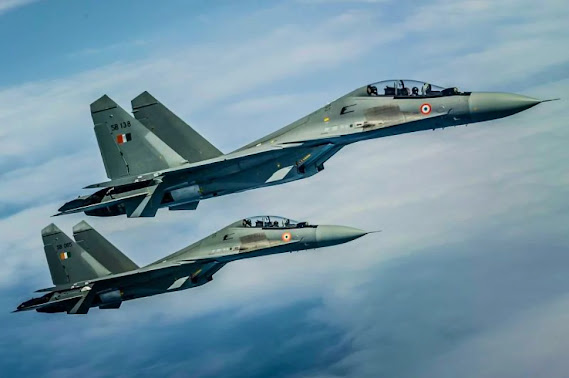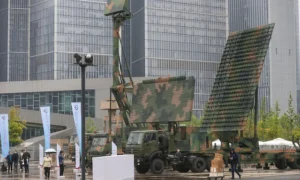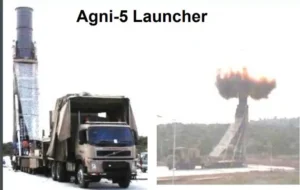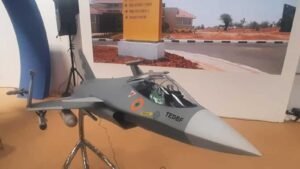Source : The EurAsian Times
 |
| Late Former Defence Minister Mulayam Singh Yadav signed the deal of Sukhoi Su-30MKI with Russia under his tenure, after the previous Narshima Rao Govt’s failure |
With an inventory of over 262 Su-30MKI fighter jets, the Indian Air Force (IAF) is the world’s largest operator of Russian-origin aircraft. Taking a giant leap forward, the IAF is now geared to indigenously modernize its fleet of Sukhoi fighters.
The Sukhoi Su-30 MKI is a long-range air superiority fighter produced by Hindustan Aeronautics Limited (HAL) under a license from the Sukhoi Design Bureau. It can perform a variety of air combat and ground-attack missions in any weather. The fighter plane is a Sukhoi Su-30 advanced model with improved avionics.
However, the history of acquiring this aircraft goes back several decades. It was in November 1996 when India placed its first order for 50 Su-30MKIs from Sukhoi for $1.46 billion. By December 2000, it was approved for licensed production of more than 140 aircraft.
In 2002, the first Su-30MKI entered operational service in India. Subsequently, the aircraft were inducted at several IAF sites in India, including those in Bareilly, Pune, Jodhpur, Tezpur Air Force Station, and Chabua Air Force Station in Assam.
However, the acquisition was wrought with controversies.
It was in the 90s when India, faced with an adversary across its western border, felt the need to add teeth to its air fleet. The Indian government, led by Congress stalwart and incumbent Prime Minister PV Narsimha Rao, signed a deal with the Russian government led by Boris Yeltsin in 1996 but on very unusual terms.
Unlikely for a caretaker government and a country headed to elections, Rao approved the payment of a $350 million advance to the Russian Sukhoi Aviation Corporation in his capacity as the Defense Minister (additional portfolio).
 |
| Indian Air Force Su-30 MKI jets |
However, this was done without a contract or the IAF pilots being allowed to test-fly the aircraft, which had flown for the first time only in 1989. The purchase triggered a flurry of protests from the opposition led by the Bhartiya Janata Party (BJP). Rao’s administration was, after all, a caretaker that followed the Election Commission’s model code.
However, the BJP, with Atal Bihari Vajpayee as its tallest leader at the time, stepped back after digging around and trying to “unearth” a Bofors-like scam that it could have potentially used against the incumbent government.
The opposition, however, failed to find any such scam at the hands of the Congress government.
The Rao government lost the elections, nonetheless. It was later revealed that the advance was paid at the request of Boris Yeltsin as Russia was going through a severe economic crisis in the aftermath of the Soviet disintegration.
After Rao was voted out, Vajpayee was sworn in as Prime Minister, with his government lasting just 13 days. Consequently, he had no time to take a call on the Su-30 deal.
Entry Of The Man Who Made Su-30 Possible For IAF
Fast forward to the formation of a coalition government on June 1, 1996, when HD Deve Gowda took over as the Prime Minister and the man who piloted the Su-30 entered the scene as the Defense Minister — Mulayam Singh Yadav, who breathed his last on October 10, 2022.
Yadav was popularly called “Netaji” and was voted the Chief Minister of India’s most populous province – Uttar Pradesh, thrice.
A socialist leader who had long opposed his counterparts in the Congress and the BJP put aside his ideological differences to give India an aircraft that would become the rock of its fleet and a formidable deterrent against adversaries across the border.
After reaching an agreement, Mulayam Singh Yadav organized a briefing for prominent opposition figures like Vajpayee and BJP member Jaswant Singh who would later become the Defense Minister. The terms of the contract and the requirements of the IAF were laid bare before the BJP leaders.
Months later, on November 30, 1996, the Ministry of Defense signed a contract with Russia for the “development and manufacturing” of eight Sukhoi-30Ks and 32 Sukhoi-30MKIs for the Indian Air Force, roughly eight to ten months after Rao approved the advance to Russia before his electoral debacle.
 |
| Forner Indian Defense Minister Late Mulayam Singh Yadav (Twitter) |
Mulayam Singh Yadav was praised across party lines after he announced the successful Sukhoi contract to the Parliament.
Veteran Journalist Shekhar Gupta recounts in one of his articles written in The Print that he had stolen an opportunity to ask Yadav whether he had closely looked at the Sukhoi deal signed by the Rao government in haste.
Yadav replied: “I know, I know. Jaswantji and Atalji had brought this up with me.” Then he continued to go into great length about how, before the entire and final transaction was inked, he had invited Vajpayee and Jaswant to South Block to receive a thorough presentation on the arrangement.
In the deal documentation, he claimed, they had proposed changes such as the inclusion of a sovereign guarantee from the Russian government stating that no kickbacks were paid and that, should any in the future be discovered, they would reimburse the Government of India for the money.
Gupta writes that Yadav said with great delight: “They came to my office, we settled everything, but you people never found anything out.”
Building a consensus with the opposition that could have blown the issue out of proportion was done discreetly, and confidence was built to complete satisfaction. Yadav was aware that the deal was necessary because India needed an advanced fighter jet to strengthen ties with Russia, which, at the time, was India’s only reliable defense partner.
All eight Su-30Ks were delivered to the IAF facility in Lohegaon, Pune, by July 1997. The agreement to produce the Sukhoi-30 MKI under license in India was signed three years later. Today, India operates more than 260 aircraft and has come a long way.
Over the past 20 years, India has made significant Intellectual Property Rights and infrastructure investments in assembling, operating, and servicing, including overhaul and spare manufacturing facilities.
The aircraft can also fire Brahmos air-to-air missiles, Astra missiles, and the Rudram missile. Not just that, India is now all set to upgrade the plane with cutting-edge technology locally.
The feat has been possible because of one man who looked beyond the confines of ideology and gave precedence to the national interest – the man, the master, Mulayam Singh Yadav, who will forever be remembered as the leader who got the Su-30s to India.




.jpg)



